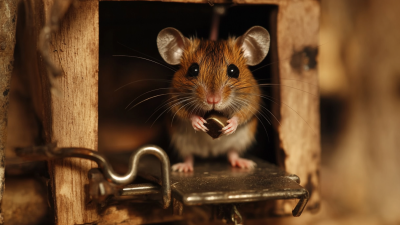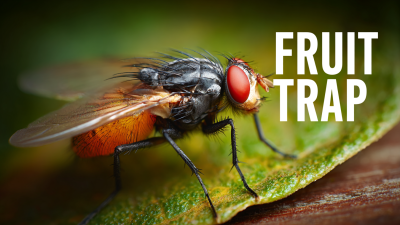
 Bird & Pigeon Pest Control
Bird & Pigeon Pest Control  Mice & Rat Pest Control
Mice & Rat Pest Control  Mole & Vole & Gopher Pest Control
Mole & Vole & Gopher Pest Control  Fly Insect Pest Control
Fly Insect Pest Control  Wasp & Bee Pest Control
Wasp & Bee Pest Control  Moth Pest Control
Moth Pest Control  Mosquito Pest Control
Mosquito Pest Control  Cockroach Pest Control
Cockroach Pest Control  Wildlife Pest Control
Wildlife Pest Control  Snake Pest Control
Snake Pest Control  Bed Bug & Flea Pest Control
Bed Bug & Flea Pest Control  Snail & Slug Pest Control
Snail & Slug Pest Control  Ant & Termites Pest Control
Ant & Termites Pest Control  Spider Pest Control
Spider Pest Control  Other Insect Pest Control
Other Insect Pest Control  Garden Products
Garden Products  Blog
Blog In recent years, the need for effective Bird Repellers has become increasingly crucial as urban areas expand and outdoor spaces are threatened by pest bird populations. According to a report by the National Pest Management Association, over 30% of homeowners report issues with birds in their yards, leading to significant damage to property and landscaping. Additionally, the U.S. Department of Agriculture indicates that pest birds can cause losses of up to $1 billion annually in agricultural sectors alone. This comprehensive guide will explore various types of Bird Repellers, ranging from visual deterrents to sonic devices, highlighting their effectiveness in transforming outdoor spaces while minimizing the disturbance caused by these feathered intruders. By employing the right Bird Repeller strategies, property owners can reclaim their outdoor areas and enhance the enjoyment and aesthetic appeal of their environments.

 Birds can have a significant impact on outdoor spaces, often leading to both aesthetic and practical challenges for property owners. According to a report by the Cornell Lab of Ornithology, bird damage in urban environments can result in an estimated $1 billion annually due to property degradation and maintenance costs. The presence of birds can lead to unsightly droppings on outdoor furniture, structures, and landscapes, which not only detracts from the enjoyment of these spaces but can also cause damage that necessitates costly repairs.
Birds can have a significant impact on outdoor spaces, often leading to both aesthetic and practical challenges for property owners. According to a report by the Cornell Lab of Ornithology, bird damage in urban environments can result in an estimated $1 billion annually due to property degradation and maintenance costs. The presence of birds can lead to unsightly droppings on outdoor furniture, structures, and landscapes, which not only detracts from the enjoyment of these spaces but can also cause damage that necessitates costly repairs.
Moreover, birds often attract pests and can disrupt the local ecosystem. A study published in Environmental Management highlighted that certain bird species can lead to declines in plant health by feeding on seeds and fruits, damaging newly planted gardens and ornamental plants. This disruption creates a ripple effect, impacting other wildlife and plant species within the environment. By implementing effective bird repellers, property owners can mitigate these issues, preserving their outdoor areas and enhancing their aesthetic value while maintaining a balanced ecosystem.
Birds can bring beauty and life to outdoor spaces, but certain species can also become a nuisance, causing disturbances in gardens, parks, and residential areas. Identifying these common troublemakers is the first step in implementing effective bird repelling strategies. Among the most prevalent species causing issues are pigeons, crows, and starlings. Pigeons tend to congregate in urban environments, often leaving behind droppings that damage properties and pose health risks. Crows, known for their intelligence and social behavior, can raid gardens and cause chaos, particularly during nesting season. Starlings, with their iridescent feathers, often travel in large flocks, overwhelming outdoor spaces and competing with local wildlife for food.
Understanding the specific behaviors and habits of these birds can enhance the effectiveness of repelling methods. Pigeons often roost on flat surfaces, while crows prefer trees and rooftops for nesting. Starlings, adaptable in their feeding, can quickly become a nuisance in areas where food is readily available. By recognizing these characteristics, homeowners and property managers can tailor their approaches, whether through visual deterrents like scare devices, auditory repellents, or even habitat modification to make their spaces less inviting. Addressing the root of the issue not only helps in maintaining the integrity of outdoor areas but also contributes to a more balanced ecosystem.
| Bird Species | Description | Common Disturbance | Recommended Repeller |
|---|---|---|---|
| Pigeons | Medium-sized birds that thrive in urban areas. | Nesting and droppings create health hazards. | Ultrasonic Bird Repellers |
| Starlings | Small to medium-sized birds known for their flocking behavior. | Aggressive territorial behavior and noisy flocks. | Visual Deterrents (e.g. reflective tape) |
| Sparrows | Small birds often found in gardens and urban environments. | Aggressive nesting; can disrupt other bird species. | Netting |
| Crows | Large, intelligent birds known for their black plumage. | Scavenging behavior; can be aggressive when threatened. | Sound Repellers (e.g. predator calls) |
| Gulls | Medium to large seabirds often seen in coastal areas. | Nesting and aggressive scavenging behavior. | Fake Predators (e.g. hawk decoys) |
Implementing effective bird repellers is crucial for transforming outdoor spaces while mitigating the impact of birds on agricultural practices. Recent advances in technology have introduced innovative bird deterrent solutions, such as laser systems that have shown promise in various agricultural settings. For instance, a turkey farm in Minnesota has successfully used laser bird deterrents to combat avian influenza, illustrating how integrating modern solutions can enhance biosecurity and protect livestock.
Another effective strategy involves combining nature-based solutions with technological approaches to manage avian populations. Research indicates that avian monitoring, utilizing passive acoustic data alongside deep learning techniques, can effectively assess bird species and behaviors in remote areas. Such monitoring not only aids in determining the most beneficial repelling strategies but also helps to inform agricultural practices susceptible to soil salinization—a critical dilemma threatening food security. By adopting these comprehensive strategies, outdoor areas can be improved, creating a balance between wildlife coexistence and agricultural productivity.
Maintaining bird repellent systems is crucial for achieving long-term success in protecting your outdoor spaces. Regular maintenance not only ensures optimal effectiveness but also prolongs the lifespan of your systems. According to a report by the Bird Control Group, consistent upkeep can increase the efficiency of bird repellents by up to 30%. This involves inspecting devices such as sonic repellers or visual deterrents for any wear and tear, ensuring they remain functional and active.
Additionally, integrating advanced technology can enhance maintenance efforts. For example, automatic bird control systems equipped with sensors can provide real-time alerts when a repeller is underperforming or requires attention. A study by the National Audubon Society highlighted that integrating digital monitoring can reduce bird-related damages by an impressive 70% over traditional methods when properly maintained.
By adopting a proactive maintenance routine and leveraging smart technology, homeowners can make their outdoor spaces less inviting to unwanted avian visitors, ensuring a serene and undisturbed environment for years to come.
When considering the use of bird repellers, it is essential to evaluate their environmental and ethical implications. Many traditional methods, such as chemical repellents or traps, pose risks to not only birds but also beneficial wildlife and plants. Therefore, opting for humane methods, such as sound devices or visual deterrents, can provide effective solutions without compromising the ecological balance of your outdoor spaces.

Tips for Choosing Ethical Bird Repellers:
By carefully selecting humane and environmentally friendly bird repellers, you can protect your outdoor areas while also being a responsible steward of nature. It’s important to strike a balance that keeps both your garden flourishing and local wildlife safe.







